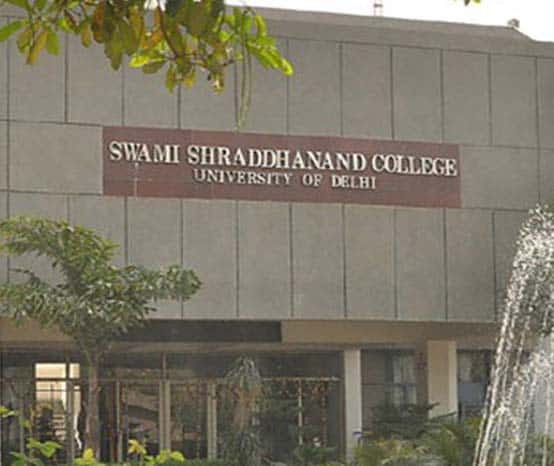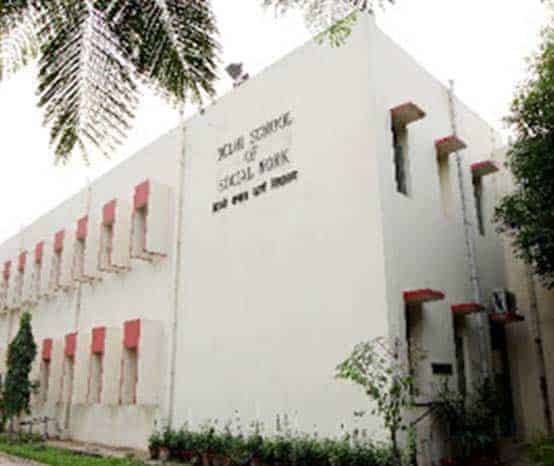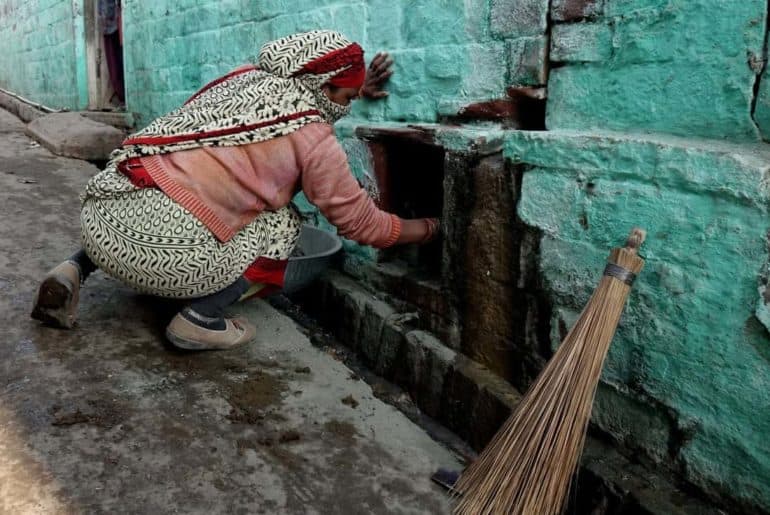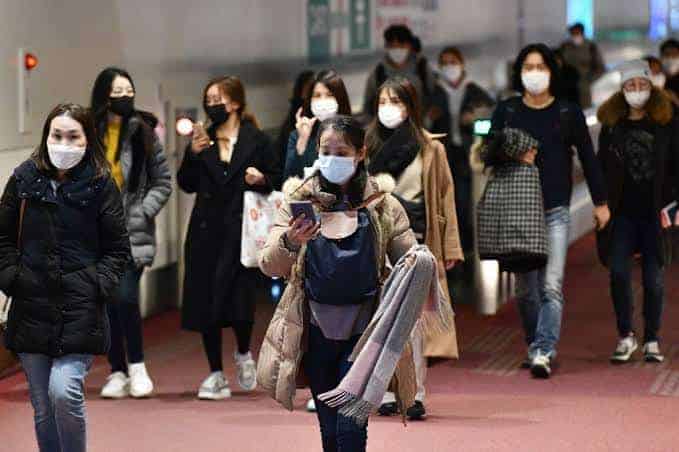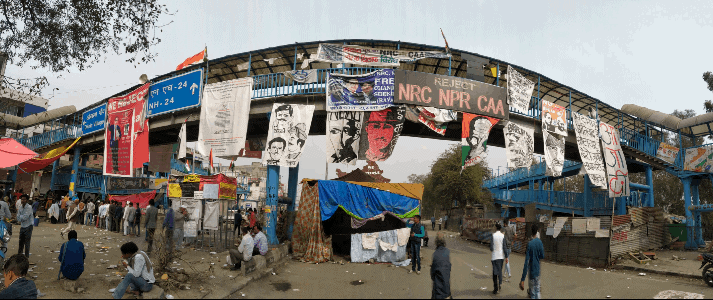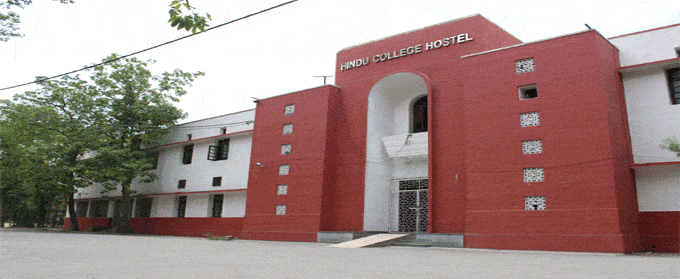Interviews for the post of Principal for Swami Shraddhanand College stand cancelled as Deputy Chief Minister states violation of norms as the reason.
On Friday, 28th February 2020, interviews scheduled on 1st March 2020 for the post of Principal, Swami Shraddhanand College were cancelled.
The cancellation is stated to be directed by Deputy Chief Minister, Mr. Manish Sisodia to Delhi University Vice Chancellor, Mr. Yogesh Tyagi, citing violation of norms.
A notice dated 25th February 2020 was available on the college website. It stated the list of 20 shortlisted candidates who were called for the interview on 1st March 2020 at 10 a.m. in the International Guest House, North Campus. The applications for the post were in response to the Advertisement No. SSN College/ Principal/ Advt./ 2019 dated as 6th October, 2019.
Manish Sisodia, in a letter to Yogesh Tyagi said, “It is to inform that the appointment has to be made in accordance to norms. It is requested that the interview should not be conducted in the absence of a properly conducted governing body.”
“Hence, the interview fixed for selection of principal on March 1 must be cancelled immediately”, said Sisodia, in his letter.
Response from Yogesh Tyagi and Delhi University authorities could not be garnered. This report will be updated as and when a statement from them becomes available.
Priyanshi Banerjee
Delhi School of Social Work Alumni condemn Kapil Mishra’s communal statements and demand his arrest by Delhi Police.
The alumni association of the Delhi School of Social Work (DSSW) has condemned BJP leader Kapil Mishra for tarnishing the respected institute’s image with his “provocative acts and communal statements”.
In a statement issued by the association, its President, Anish Kumar and General Secretary, Ajay Vijay Rahulwad said, “Delhi School of Social Work, University of Delhi has played an eminent role in addressing the worst situations which occurred during 1947 Partition riots and thereafter in 1984 Sikh Riots. Since 1946 till date, the Social Work Department of Delhi University has given many social workers, activists, academicians, directors, leaders, writers, and bureaucrats to the country who are trying to bring positive changes in the society through their works.”
“…We also have a blot such as our Alumni BJP Leader Kapil Mishra, who has organized recent Delhi riots and incited mob to disturb communal harmony of the city.” In past 3-4 days, the community fabric has been systemically targeted to be destroyed in favour of communalism, and as a consequence of that; many people have lost their lives, thousands of people have lost their homes and livelihood. The mental, emotional and psychological trauma that will stem from these events will be too catastrophic for all the survivors.
“We are ashamed of Kapil Mishra and also that he studied Social Work in our college. The image of our department and social work profession has been tarnished due to his provocative acts and communal statements”, the press release stated. The DSSW fraternity affirms its stance against the hatred, violence and communalism spread by Kapil Mishra who has maligned their profession. They demand Delhi Police to arrest him and take strict action against all such individuals.
Speaking to The Wire, Anish Kumar, president, DSSW alumni association, said, “The association will never invite him and even if he comes some day, we shall protest. As of now, we are working towards providing relief to the affected persons and the victims’ families in Delhi. We are working towards rehabilitating the riot affected. We are also spreading the message of mutual love and brotherhood.”
Kumar said, “Even the Delhi high court asked police to file an FIR against those who are involved in inciting the violence. When the court asked police why there was no FIR against Mishra, it said it is not the right time to do so. It means police is also accepting that Mishra has a role to play but they will not file an FIR against him as of now.”
“We will soon run a campaign and an event with the caption ‘Get Well Soon Kapil Mishra’,” he added.
Feature Image Credits: DU Beat Archives
Paridhi Puri
On Zero Discrimination Day, we must look at how caste based discriminations sustain in the most horrifying form of manual scavenging.
Earlier this month, industrialist Ratan Tata shared a heart-wrenching video titled “Mera Baba Desh Chalata Hai (my father runs the country)”. The video, which has garnered millions of views and empathies, showcases a young boy reciting a poem at his school and laying bare a vile truth of Indian society – manual scavenging, and the parlous life of sanitation workers. It was released to announce Tata Trust’s new initiative ‘Mission Garima’, for the upliftment of sanitation workers and also gave the message of easing their lives through segregating waste into dry waste and wet waste.
It is not the first time that the concerns regarding manual scavenging have been raised. Realizing manual scavenging as a direct threat to human dignity, government schemes and programmes and civil society initiatives like ‘Rashtriya Garima Abhiyan’ have been working to end manual scavenging. Legislative efforts such as the Protection of Civil Rights Act (1955) prohibits forcing anyone to practice manual scavenging and; Manual Scavengers Act (2013) seeks to reinforce this ban by prohibiting manual scavenging in all forms and ensures the rehabilitation of manual scavengers.
But the ‘stink’ of manual scavenging lingers on, with caste, untouchability and stigma further intensifying its stench.
Historically, caste was the basis for social and economic organization and is hereditary in nature. Dr. B.R. Ambedkar termed “Caste as a notion and a state of mind” and thus discriminations based on the caste system were shunned and every Indian citizen was guaranteed liberty and equality. Yet after years of India being a republic, there is some Gangabai, Kailash, Rekha or Vineet*, who are still suffering the pangs of being a Dalit and are obliged to undertake the ‘polluted’ work of manual scavenging – the worst surviving symbol of untouchability.
In India, between 2017 and late 2018, one sanitation worker died every five days, making manual scavenging one of the most hazardous jobs, along with being unlawful and inhuman. In 2014, the Supreme Court of India estimated that there are 9.6 million dry latrines that are still being cleaned manually by people belonging to the Scheduled Castes. The figure excludes cleaning of septic tanks and open defecation from roads and other areas. Poverty, low wages, limited access to education and land resources, social exclusion and poor health due to direct contact with obnoxious fumes and harmful bacteria, perpetuate their already impoverished situation. Some manual scavengers believe their treatment to be sanctioned by Gods and think of manually cleaning toilets as their ‘jagir (estate)’ or something they are entitled to. This kind of assumption of subjugation and exploit is unnerving and not at all acceptable in a democratic setup. Even when some manual scavengers succeed in escaping this atrocity despite threats and backlash, they still experience the sharp scrutiny of people around them who view them as ‘filthy’. The panchayats, local schools and criminal justice system act as biased entities and play a role in further deepening these divides.
Gandhi since 1901 had talked about the indignified nature of manual scavenging that shames us as humans, who allow it to happen. Much stride has been made since then but still it goes on in many parts of the country, especially in states like Gujarat, Madhya Pradesh, Maharashtra, Rajasthan, and Uttar Pradesh. Without sanitation workers, the proper functioning of entire cities can be hampered. Thus, concerted efforts need to be made to guarantee the respect and appreciation our sanitation workers deserve. Vigorous state intervention, in the form of offering rehabilitation and alternative livelihoods, mechanizations, stringent laws and their effective implementation, funding for safety gear and other necessities is required. All these should be supplemented with a transformation of attitudes towards the sanitation workers through awareness programmes in which private bodies like the Tata Group, NGOs etc. can play a part. The element of caste based discrimination that is deeply entrenched into the concept of sanitation and related work must be disjointed from them. Individuals must also segregate their waste, as one should be responsible for one’s waste themselves.
Dr. Ambedkar quoted, “Indifferentism is the worst kind of disease that can affect people.” We, as humans cannot be indifferent about such a potent issue that affects millions of people and endangers the individuality and dignity of a citizen. Manual scavenging is a dirty truth of our society which feeds on a person’s worth and right to live. Many dangers threaten the existence of our nation, but it is only when we come together as equal and unified, do we stand a chance to maintain the sanctity of our benevolent motherland.
*- Names used do not connote any person living or dead.
Image Credits: Shaikh Azizur Rahman for The Guardian
Ipshika Ghosh
Ankit Tiwari performed on the last day, as heavy rain engulfed Nexus, the annual cultural fest of Sri Venkateswara College. However, the star night was delayed and issues arose, even after strict security.
On 29th February, the final night of Nexus’20, Sri Venkateswara’s Annual Cultural Festival, everyone was excited for the fest to be concluded with the performance of renowned singer and songwriter, Ankit Tiwari. The performance which was arranged to be at 5 pm, was extremely delayed due to unexpected showers and thunderstorm that ensued in the evening.
Before the performance began, the huge crowd which had gathered to listen to the artist, shuffled back and forth between the performance ground and the college building to take shelter from the excessive downpour. The rain kept everyone on their feet, and the muddy grounds were a dangerous territory for people who had dressed their best for the fest.
There was extremely strict security maintained for the star night. Many items were prohibited to be carried. There were staff teachers, and administrators on the main gate as well as inside the barricade. However, the heavy rain tested all.
During the beginning of the performance, the sound system switched offmid-song due to technical errors, causing a ruckus.
A student inside the barricade, told DU Beat, “The issue was that there were a lot of people who wanted in, and as they were trying to enter photographers were getting shoved. Barricade did have administrators and College staff inside to see if everything is okay.”
Despite of security being maintained, the large number of crowd was a test for all. Female photographers present at the venue faced harassment by other photographers and Tiwari’s team while doing their job, with people pushing and shoving others around to get a barricade entry, photographers got shoved and hit as the crowds around the barricade became unmanageable. However, there were administrators present inside the barricade for safety of students.
A female photographer covering the event, in conditions of anonymity said, “The people with Ankit Tiwari told me that if you want a picture then you need to come to his room. As I was the only female photographer, the other male photographers told me to go to the back.”
These events occurring mostly in isolation and behind closed curtains clearly didn’t dampen any spirits as the crowd wholeheartedly enjoyed after the singer arrived on the stage. Tiwari sang some of his greatest hits, like Sun Raha Hai Na Tu, and also invited members of the audience to join him on the stage as he performed, hyping up the crowd. The event ended at 8 pm at last, with rains showing no signs of satiating. People ran helper-skelter to take cover and rush towards the closest metro stations wading through the muddy roads while people struggled to exit the campus due to the excessive crowd.
Rajat Sharma, President, Students’ Union, said, “Day 3 of Nexus was going well even after the heavy rains but some incident occured between the authority, photographers and delhi police which was very unfortunate to happen. I being unaware of the complete situation from all the three sides cannot give my verdict over right and wrong but anything of this sort is obviously not good for tge reputation of the college and if there was any misconduct I am extremely sorry for the same taking the responsibility and blame wherever required.”
However, in Sri Venkateswara College, Nexus, the annual cultural fest is organised by Fine Arts Association (FAA) as well.
Hrithik, President, FAA, said, “Keeping in mind about conditions prevailing , we tried our level best to assure strict security and efficient management . Entry inside the college on the three days was strictly provided to only those who had the valid ID cards . Our officials were present at the main gate and near the barricade to make sure there was no issue .
We appreciate all our media partners including all the videographers and photographers who stood by even in the unpleasant weather conditions to cover our event . My team and I would also like to thank our enthusiastic crowd which helped to make Nexus 2020 a grand success.”
The star night was memorable for all. The pleasant chilly weather soon washed away everyone’s trouble.
Nexus ended on a chilly note, yet witnessed warmth on all three days. The college was filled with iconic Bollywood mementos, the decor was remarkable with them being able to put a ship, owing to the Pirate in all of us, between the College. Nexus, unlike other fests, is organised not just by the Students’ Union, but the Fine Arts Association, as well. The entire college perfectly imbibed the theme of “Lights, Camera, Nexus.”
Feature Image Credits: Manav Ahuja for DU Beat
Shreya Juyal
Satviki Sanjay
All you need to know about the novel global coronavirus or 2019-nCOV outbreak.
The Coronavirus outbreak that started in the Chinese city of Wuhan in mid-December 2019, has according to official figures claimed 564 lives and 28,000 infections. While data leaked from the media giant, Tencent, indicates the figures range up to 27,000 deaths and 1.54 lakh infections. Most of these deaths have occurred in mainland China, but more than 272 people have been infected with the virus globally.
China is taking emergency measures to contain the virus, including putting cities on lockdown, suspending all forms of public transport, mass quarantine and shutting down public areas and tourist spots. Not just China, several countries are taking measures against the virus.
What is coronavirus?
Coronaviruses mainly circulate among animals but have been known to evolve and infect humans in the past as has been seen with SARS (Severe Acute Respiratory Syndrome) and MERS (Middle East Respiratory Syndrome). The genome structure of the virus which is spreading in China is 70 percent similar to SARS and has been given the initial name of 2019-nCoV. The SARS outbreak in 2003 killed 774 people.
What are the symptoms of coronavirus?
Reported symptoms have included fever in 90 percent of the cases, fatigue and dry cough in 80 percent, shortness of breath in 20 percent, with respiratory distress in 15 percent. Chest x-rays have revealed signs in both lungs. Apart from this, a large number of people have also been diagnosed with pneumonia.
How does coronavirus spread?
The virus, it is believed, originated at a seafood market in the city of Wuhan. The patients who initially reported sick were stallholders who worked at the Huanan Seafood Wholesale Market in Wuhan. Though the modes of transmission are still unclear, there is evidence of human-to-human transmission. Additionally, it is estimated that an infected person can at least spread the virus to three to four healthy people.
Which countries have been affected by coronavirus?
Though concentrated mainly in China, several other countries have reported confirmed cases. These include Hong Kong, Australia, Malaysia, Germany, Macau, Canada, UAE, India, the Philippines, the UK, Italy, Russia, Belgium, Cambodia, Finland, Spain, Sri Lanka, Sweden, Thailand, Vietnam, Singapore, Japan, South Korea, Taiwan, Nepal, France, and the United States. The highest number of confirmed cases outside mainland China have been reported in Japan (45) and Singapore (30).
Has coronavirus affected India?
Till now 3 confirmed cases have been reported from the state of Kerala. Out of these 2 are students who had returned from Wuhan while the other is a businessman. All three are reported to be in a stable condition. Besides the Indian government has evacuated a total of 640 students from Wuhan and these students are being kept under observation at Ram Manohar Lohia hospital in the national capital. Passengers arriving from China and other countries are undergoing thermal screening at six major Indian airports, including Delhi, Mumbai, Chennai, Hyderabad, and Bengaluru. In addition to this, the Ministry of Foreign Affairs has suspended all China-India visas until further notice.
Has anyone in India tested positive for coronavirus?
3 Indian nationals have tested positive for coronavirus or 2019-nCOV. In addition to this, a total of 1,999 people have placed under quarantine in Kerala.
Is there a cure for coronavirus?
There are currently no vaccines available to protect you against the coronavirus. You may be able to reduce your risk of infection by doing the following:
– Wash your hands often with soap and water for at least 20 seconds.
– Avoid touching your eyes, nose, or mouth with unwashed hands.
– Avoid close contact with people who are sick.
Has the outbreak also affected the economy of China?
The Chinese government has directed the closure of working and public spaces in 24 of its 31 provinces. These provinces represent 80% of the country’s GDP and 90% of the country’s exports. The outbreak has nearly stopped tourism in China. The Shanghai Stock Exchange principle index SSE Composite has fallen nearly 8%. The outbreak has also started effecting export-import operations to and from China.
Image Credits: The Jakarta Post
Aniket Singh Chauhan
Here is an eye-opening first hand account of the Shaheen Bagh protests from the pen of a participating media-person.
I have seen various media personnel visit and report about the protests at Shaheen Bagh. But as media students, we are often told that the more comfortable a person is with us, the more heartfelt the conversation will be. Thus, I made it a point to be without any media equipment and be a part of the protest. The result of this was eye-opening.
As I reached the locality, the first thing I could notice was the posters of the local MLA Amanatullah Khan all along Jasola puliya (bridge), besides which are huge dumps of garbage. The area suffers heavily from lack of sanitation facilities. The Delhi Police have placed barricades at multiple places around the demonstration.
Dissent and fulmination form the basis of a vibrant democracy. In neoteric times, a demonstration which has become the flag bearer of these rights are the protesters of Shaheen Bagh. These protests have, for antipathetic and sympathetic reasons, been the hot topic in national politics as well as media for over two months.
One can’t help but notice several roadside shops selling, in simple words, protest merchandise. These include shirt pins, mufflers, head wraps and t-shirts. The shopkeeper tells me that he, a class 7th student, along with his father can make around Rs. 200 to 300 each. On being asked about his schooling, he gives me a sad shrug. When I ask him about his meals, he tells me that just twenty metres ahead, a ‘Sardar Ji’ and his wife, both advocates have started langar and they feed everyone. “They both get pensions every month as they are lawyers. What a life they have. I wish I could also just do nothing and earn a lot.” The point of doubt in this statement was that advocates do not get any pension, so where was that money coming from? Even after multiple tries, I couldn’t get the answer to this question. The whole area is witnessing the rise of a gig economy which survives on the protests and if the protests stop, this economy will also crash.
Further down the street is a vendor who is selling kufis. Talking to me, he reiterates his anger towards the establishment, “The government is doing nothing. Modi and Shah along with the RSS are onto us. Sometimes, I feeling like burning the whole parliament down. They are not doing work anyway.” Just beside him is an old lady or as she was being addressed ‘Dadi’. She tells me about her son working in the Delhi Metro as an engineer. She emphasises on the fact that no one can defy ‘Allah ka Farman’ or God’s order, “These people in the government are just humans and they can’t defeat Allah.” On knowing that I was a college student, she gives me her best wishes.
The place was full of buzz as the arrival of Supreme Court lawyers was due in a short while. Even though the people there are protesting for the same cause, still everyone’s views are different. And without a leader, these views clash. While some wanted to talk to the lawyers, others were steadfast on the fact that the Apex Court itself is a ‘slave’ of the government.
The stretch which is being used by the protestors for the sit-in is home to many big showrooms. And due to the protests, the business of these shops has crashed. The streets also had the rumour that these showroom owners are bribing the authorities to clear the road and get their businesses running. Annoyed by this rumour an attendee says, “These people won’t understand. If they won’t earn for some time, what bad can happen? But if the protests finish our future generations won’t be able to live, they’d become slaves.”
As opposed to the common narrative, people here were genuinely scared of the trio – National Register of Citizens (NRC), National Population Register (NPR) and the Citizenship Amendment Act (CAA). This fear was also a result of mongering as most of the people didn’t know everything about the bill. The hoarding put up in the area, which did try to explain the matter was itself fallacious. This explanation connected the Aryan theory of Friedrich Schlegei and William Jones to the present scenario – where misconception goes on and on based on such assumptions and tries to force a particular interpretation of the trio rather than letting people using their sense.
The protestors themselves know the fact that the moment they unblock the road, nobody will care for their protesting anymore. Apart from this, the organisers also do not allow men to sit in the front, only women are allowed to do so. On being asked why, a bystander tells me that they only have these two factors – the roadblock and the women, as leverage for the protest. If they lose either of them, the protests will fail.
This has resulted in the popular opinion of the place to shift from ‘saving the constitution’ to ‘saving the kaum’ or community. The protest is being led by the women of Shaheen Bagh but several men around the area do not want to accept this empowering symbol. “Are we wearing bangles that these lawyers will ask the women for their views? These women are just being given too much importance”, said a man when the Supreme Court lawyer asked for the views of women on the matter. After a short while, the so-called ‘volunteers’ barged into the sitting area and blocked the view of many women. When confronted they started pushing and heckling the women. Since these boys were locals and knew almost everyone, not many confronted them and they continued to stand wherever they wanted.
Just a few days back so-called activist, Gunjan Kapoor tried to film the protests without consent while wearing a burqa and sitting among the protestors. After a while, she was caught by the protesters who reportedly had a hard time ‘saving’ her from the locals before handing her over to Delhi Police. Mentioning this, a dadi trying to give proof of the peaceful nature of the protests to the lawyers, said, “We handed over Gunjan Kapoor to the police. Even though she was a Hindu, we did not harm her.” These lines forced me to rethink about the secular nature of the protests.
The Shaheen Bagh protests are facing the grave dangers of conflicting views and unclear narratives. If the protestors do not understand and address this, the whole protests will be delegitimised, thus breaking the protestors.
Image Credits: Aniket Singh Chauhan for DU Beat
Aniket Singh Chauhan
Hindu College Boys’ Hostel ended its strike on Wednesday, 26th February 2020 after the administration agreed to their demands. Three students were on a hunger strike since Monday.
The residents of Hindu College Boys’ Hostel had posed the list of long-standing demands to the Principal on Monday, 24th February 2020 and on her failure to address them, they began an indefinite strike at 1:30 pm in front of the college administration. Around 50-60 students were protesting against three major issues:
- Merit criterion that was increased for the readmission of second and third years including PWD students
- Resolving of Wi-Fi problems.
- Reinstallation of hostel boundaries that were broken for the construction of a food joint PAM (Pizza and More) within the hostel premises.
The present criterion for admissions and retention of seats in the hostel is 6.5 CGPA for Arts and 7.0 for Science and Commerce courses and considered averse to the students participating in extracurricular activities or preparing for entrance exams. The residents demanded revision in the re-admission criteria, decreasing it to the previous 6 CGPA for Arts/Humanities courses and 6.5 CGPA for Science and Commerce courses and scrapping it altogether for Persons With Disabilities (PwD) students. In the official application to the Principal, the President of the Hostel Union writes that in case a student fails to maintain the criteria then his contribution in ECA and Sports should be considered.
Image Caption: Students write to the Principal for redressal of their demands.
Regarding the Wi-Fi issue a resident of the hostel quotes, “Wi-Fi concerns the accessibility of study material to the students since DU servers provide access to academic websites and even general connectivity considering the poor signals around the campus.” In fact, a payment of Rs 3,500 was taken at the beginning of the academic year for replacing the existing Wi-Fi system but no action was taken.
Pizza and More (PAM) is a shop in the college that was being shifted in one of the hostel lawns since a new building was being built over there. According to the students, the construction of the cafe in the hostel lawns is an attack on their democratic spaces where they can sit, talk, organize events or play cricket. A resident anonymously told us, “The decision of PAM being constructed in our hostel lawns indicates the increasing privatization in our college. Moreover, it would create inconvenience for the residents especially the ones residing in rooms facing these lawns since their privacy would be in threat and also the cooking would cause a lot of smoke”. Some parts of the construction were started without the consent of the hostel union after which it was destroyed by the students the very next day.
The students ended their strike on Wednesday, 26th February 2020 after two of their three demands were accepted. They have been assured by the authorities that they will look into the Wi-Fi problems and construction of PAM. The residents reported, “The Principal told us that the readmission criteria are decided by the warden and hostel committee. Since we could get her to accept what was in her hands, we stopped protesting in front of the Principal’s office. The warden also has assured us that the hostel committee will try to relax the criteria especially for PWD students.”
DU Beat reached out to the Union members and residents on hunger strike for their statement, but is yet to receive an official response from their end. This report will be updated as and when the parties comment.
Feature Image Credits: DU Beat Archives
Aishwaryaa Kunwar
We, the people of India, may have grown up with school debates that argue in favour of India being a “soft State”. However, the delusional bubble can only carry so far as the world around you, as you know it, is crumbling and, to paraphrase Rick Blaine’s line from Casablanca – our delusions of peace don’t amount to a hill of beans in this crazy world.
India, as a society, is violent and not mild about it. From the practice of female foeticide, dowry murders, and caste violence to the silencing of journalists (fifth-worst as per Reuters, circa 2015), danger posed to women (Reuters, The
Guardian, CNN reported India as the most dangerous country for women in 2018), and our educational model with its suicide stories of frustrated and frightened youth – we have internalised this violence as a part of the Indian
routine alongside “chai-paani”. Then, over a week ago, a CCTV footage surfaced from Jamia Millia Islamia, which would be enough to shake the ideological core of the people of a society not so blindly in love with violence and mob justice, as the Singham, Simmba, and whatever Rohit Shetty’s making next-applauding masses are.
The footage from the University’s library showed policemen entering with lathis, charging at students who appeared to have been inside in their booths. The violence in the video is triggering as the youth holds its hands above its head to avoid injuries. The footage comes in, post the denial of the Home Minister and the Delhi Police regarding thelatter ever having entered the library on 15th December 2019. Media outlets like Republic TV, Times Now,etc. claimed to have found the “unedited” version of the footage, showing the students entering the library with stones, suggesting that the actions of the CRPF were provoked.
Alt News later fact-checked the authenticity of the footage and revealed that what had been propagated as a stone in the hands of a student was a wallet. The damage, however, to the collective conscience and moral psyche of India was done and dusted with, at that point. When Instagram pages like Indian Military Updates post captions that state “Condemn The Violent Actions of CRPF Bcoz (Because) They Were Not Violent Enough”, we need to analyse our problematic romance with violence.
Anurag Thakur and the like of his breed of politicians can get away with cries that lead to violent action, in the faces of the Jamia and Shaheen Bagh shooters, not because the judiciary or the State are being undemocratic, but because they are seemingly catering to the bloodlust of the masses. Family WhatsApp groups and dinner-table conversations should be one’s doorway to the horrifying glorification of the acts of the police. Lived experiences of the people, their dissent, a need to question – these become secondary in middle- class Indian households, to the need to dictate and control the narrative, even if it defies any semblance of fact.
Middle-aged people alike have justified the violence in the footage, believing that the acceptable realm of universities and for students is text-book education, employment, and not the acceptably dirty business that is politics. They fail to see the first two as inseparably linked with the course of political developments, blinding themselves conveniently to the ideals of the very Independence struggle that allows this nationalistic fervour but was carried on the martyred backs of young college students.
Like or dislike for student politics aside, what the attitude towards the Jamia violence shows is not just social tendency to dismiss our youth as misguided when they do anything but obey, but it is also reflective of a deeply problematic ideological acceptance and internalisation of Althusser’s repressive state apparatus. What this country needs to ask itself is not whether the students had stones or any other fictional weapon, but whether the Police has a
right to unleash that kind of barbaric violence. Or worse, when they think the State’s people condone the violence that contains and kills dissent.
Anushree Joshi
[email protected]

